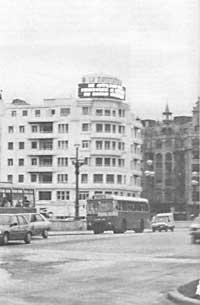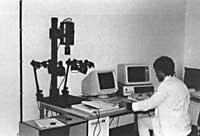Automatic image analysis

And God said: Make Light! And God saw that the light was good. This can be the first day of the birth of the world according to the book Genesis. However, in the five senses that the human being has to relate to nature, the vision will be the one that offers more information, so it is very difficult to think about the world of darkness.
In fact, vision is the most complex human sense, the most directly related to the brain and, therefore, the most related to the non-conformities of opinions that two people can express with an image. Therefore, in scientific papers requiring impartial observations, the vision is not sufficient. Consequently, in recent years, the possibility of developing an electronic eye has been proposed.
In addition, the appearance of industrial and automata machines requiring artificial vision forced this eye to see things as they were. This allowed to create automatic image analyzers.
To complete these systems, the physics of the eye was analyzed and the instrument that most resembled the eye was the television camera. Both work in the same way, that is, an optical system (called crystalline in the eye and lens in the television camera) carries the light rays corresponding to an image to a laun zone sensitive to light (retina of the eye or photodetector of the TV camera). This luminous signal becomes an electric pulse that runs the optical nerve or the camera circuits. Therefore, and like the human eye, the image analyzer takes the information of what surrounds it.
In the human being, electrical information goes to the brain. In it the original image is reconstructed through systems little known.
Many times it is used of the images that the brain has in memory or in the subconscious.
In the image analyzer it occurs that a quartz device in the television camera divides the image into small grids or points called pixels. In the camera photodetector the luminosity of these pixels becomes an electric pulse. The detection is done in black and white. However, if to analyze an image it is necessary to transport it to the brain in the case of the human being, in our case it should be carried to a computer. For this purpose, electric pulses must become a number that is understood by computer.

This operation refers to the digital analog converter in which each point is added a value between 0 and 255 depending on its luminosity (Example: a black point corresponds to the value 0; a white point a value between 255 and a grey point). Once this is done, the computer memorizes this numerical image and following a similar path (but in the opposite direction) to the previous one, it will be possible to view the original image on a television screen. The main advantages of this complicated process are two:
- The image can be known objectively
- The image can be manipulated as desired, that is, increase it, reduce it, turn it, color it, compare it with other figures, etc.
For all this, automatic image analysis has become essential in areas such as cartography, meteorology, biology or metallurgy.
Buletina
Bidali zure helbide elektronikoa eta jaso asteroko buletina zure sarrera-ontzian











